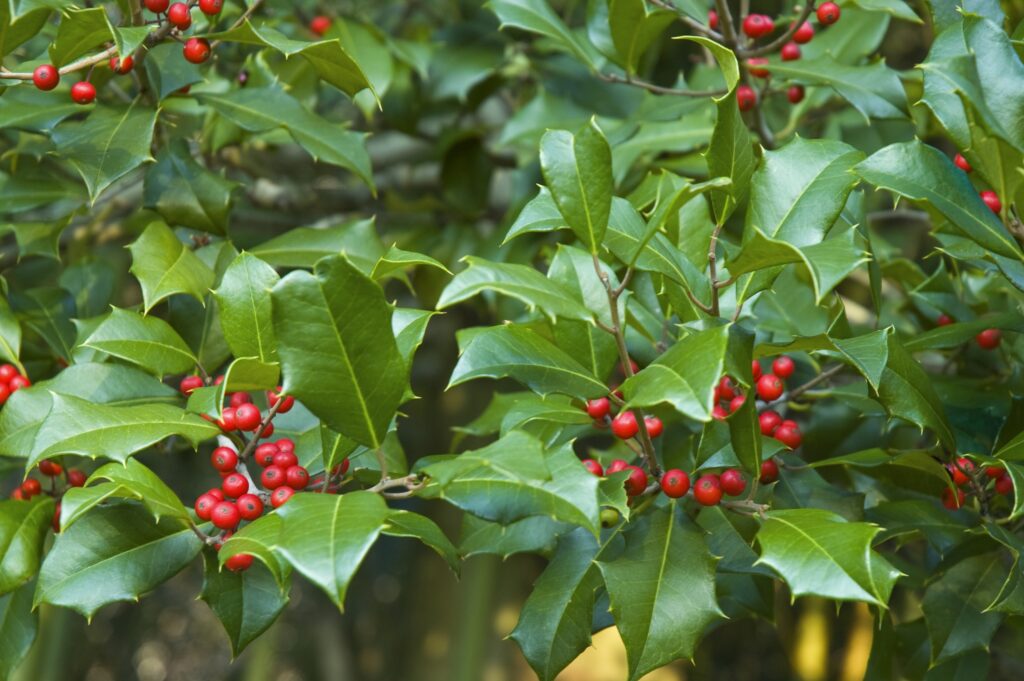During the cold and dreariest times of the year, evergreen trees provide much-needed color among the otherwise monochrome landscapes of winter. Evergreens are a critical food source and provide shelter for critters during winter, much like deciduous trees, and their leaves provide refuge from the sun during the summer,
With such a vital winter role, planting and protecting native trees will make a positive impact for years to come, even in your backyard.
Wondering where to start? Here are a few examples of native evergreens that support wildlife and improve local ecosystems.

While holly trees typically conjure up visions of winter holidays and décor, they are an important native species that provide year-round benefits to wildlife. Native to the southeastern United States, American holly berries are a favorite of American robins that will gorge themselves when the berries reach peak ripeness in the winter months. Their dense foliage and sharp leaves protect numerous songbird species from predators.

These graceful but slow-growing evergreens used to blanket the northeastern United States; however, their numbers have been significantly reduced due to logging and infestations of the woolly adelgid, an invasive insect from Asia that deprives the tree of nutrients and damages the canopy. Hemlocks also play an especially important role in forests, providing natural cover for deer, grouse, turkeys, and numerous other animals.

Although native to the Rocky Mountains, these attractive, silvery blue-green evergreens are a favorite of many landscape designers (even in less favorable climates.) In its native mountain range, the Colorado Blue Spruce provides native birds with both protection and seeds, and their tall study branches offer excellent perches for crows, owls, and other species. Although not the preferred diet, when food is scarce during the winter, its low-anging foliage provides food for browsers and big game animals.

Unlike the evergreens mentioned above that have needle-like foliage, the Madrone is a broadleaf tree that retains its foliage all year. Native to the pacific northwest, the Madrone produces bright, scarlet-colored berries that are a favorite of birds like the cedar waxwing, band-tailed pigeon, and quail. Its cascading white flowers attract hummingbirds and butterflies. Native Americans also had numerous uses for the Madrone, using the berries for cider, fishing bait, and jewelry and the bark for countless medicinal purposes.
Help us plant trees all year long! When you make a gift to the SCA, you help preserve America’s national parks and help develop the next generation of conservation leaders.